I'm trying to automate a process I've normally done in excel. This process consists of merge and compare different columns. For example:
df1:
sp|P07437|TBB5_HUMAN
sp|P10809|CH60_HUMAN
sp|P424|LPPRC_HUMAN
sp|P474|LRC_HUMAN
df2:
sp|P07437|TBB5_HUMAN
sp|P10809|CH60_HUMAN
sp|P42704|LPPRC_HUMAN
df3:
sp|P07437|TBB5_HUMAN
sp|P10788|CH70_HUMAN
sp|P42704|LPPRC_HUMAN
And the output is something like that:
sp|P07437|TBB5_HUMAN | sp|P07437|TBB5_HUMAN | sp|P07437|TBB5_HUMAN
sp|P10809|CH60_HUMAN | sp|P10809|CH60_HUMAN |
| | sp|P10788|CH70_HUMAN
sp|P424|LPPRC_HUMAN | |
sp|P474|LRC_HUMAN | |
| sp|P42704|LPPRC_HUMAN| sp|P42704|LPPRC_HUMAN
I was trying to use the function compare or mergelink but I don't have this result. Do you know another function that I can use in this case?
More or less is something like Venn Diagram, that is exactly what I do after this in order to check that everything is good.
Here you are and a reproducible example:
df1 = data.frame(TEST1=c("sp|P07437|TBB5_HUMAN","sp|P10809|CH60_HUMAN", "sp|P424|LPPRC_HUMAN"))
df2 = data.frame(TEST2=c("sp|P07437|TBB5_HUMAN","sp|P10809|CH60_HUMAN"," sp|P42704|LPPRC_HUMAN"))
df3 = data.frame(TEST3=c("sp|P07437|TBB5_HUMAN","sp|P10788|CH70_HUMAN", "sp|P42704|LPPRC_HUMAN"))
Thank you very much.
